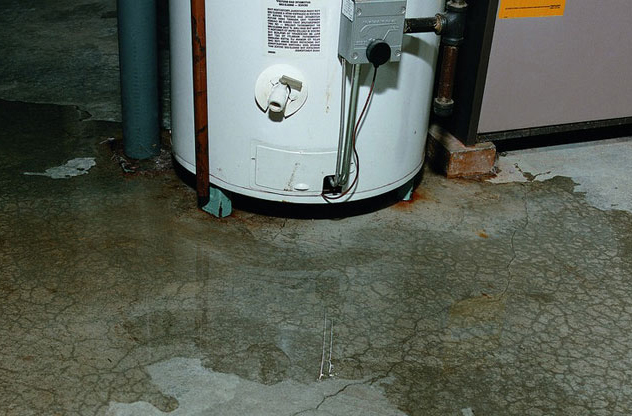Sometimes, a leaking water heater is subtle, with water pooling at the bottom. Other times, the leak can be so significant that you’ll have no choice but to deal with it immediately. Regardless, you should understand the possible causes of water heater leaks and what you can do about them to ensure they don’t become a huge hassle.
What to do when you find a leak
If the leak is small, wipe up the standing water with a towel and check back in a few hours. If there’s no more standing water, it could mean it was an isolated issue. Just keep an eye on it to ensure it doesn’t happen again.
If it’s a major leak or the water has returned when you check back, follow these steps:
- Shut off the water. Most homes have a valve near the water heater that can be closed to prevent water from entering the tank. If you do not have one of these valves, or it is inaccessible, you can also use your property’s main shut off valve to cut water to the entire house. This stops the leak in its tracks. If you need to pinpoint the leak, you can have someone turn it back on while you look for it.
- Shut off the power. Whether you have an electric or gas water heater, you don’t want to be messing around with either power supply. For an electric heater, simply go to your circuit breaker and shut off the one powering it. If you have a gas heater, most have a switch near the bottom that can be turned off to cut the gas.You can also close the gas valve leading into the heater, but these can be damaged through use, so be careful. If you have any reservations or are inexperienced in these matters, we always recommend having a licensed plumber inspect it.
- Locate the leak. There are many areas where leaks can occur.
Make sure to check common trouble spots:
- Inlet and outlet connections. Your cold water inlet and hot water outlet are located at the top of the unit where the pipes connect to it. If the leaks are happening here, you may be able to fix the problem by tightening the fittings with a wrench.
- Temperature and pressure relief valve. This valve can be located at the top or front of the heater and is designed to relieve pressure when it gets too high. If your heater has to chronically release pressure, this valve can be overused and damaged.Ensure you don’t have the temperature too high. The United States Department of Energy recommends setting the water temperature to 120 degrees Fahrenheit.
- Tanks. Tanks commonly leak from the bottom. So if you notice water pooling there on more than one occasion, it might be the problem. You may have to fully replace the unit once the tank begins to leak.
- Drain valve. The drain valve is located near the bottom of the tank and is used when flushing your tank. Double-check to see if it’s completely closed. If not, close it and you should stop the leak.
Once you know where the leak is, you should call a plumbing professional to either repair or replace. Bieg Plumbing has been dealing with water heater repairs and replacements for nearly 60 years. We’re the name you can trust for all of your plumbing needs in the St. Louis area. Contact Bieg to schedule an inspection or consultation.
Got a bad leak? No need for luck. Just call in the red truck!

